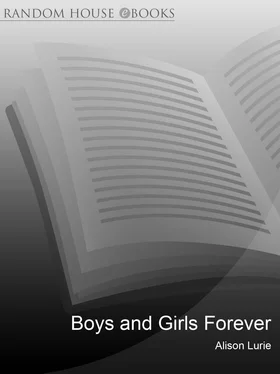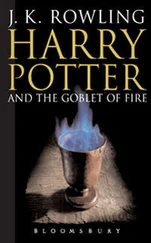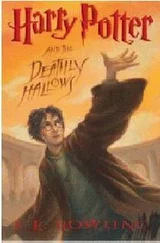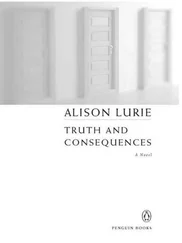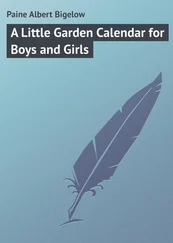Like Wordsworth, de la Mare saw childhood as intrinsically superior not only to adulthood but to boyhood. In 1919 he declared that
The child divines, the boy discovers.
The child is intuitive, inductive, the boy logical, deductive.
The child is visionary, the boy intellectual.
The child knows that beauty is truth, the boy that truth is beauty. 4
In this sense, de la Mare remained a child all his life, preferring intuition and vision to logic and reason. In many of his stories and poems he views the world with the intensity, innocence, and credulity of childhood. De la Mare’s world, like that of an imaginative child, is full of mystery and wonder. As he once wrote, children do not distinguish sharply between reality and invention: “between their dreams and their actuality looms no impassable abyss.” 5Nature is alive; animals and insects and birds may be conscious beings; places have strong and definite personalities. Ghosts inhabit deserted old houses; fairies and witches and elves haunt woods and gardens; any tree or pond may have its attendant spirit. De la Mare’s characters, especially if they are children, are often intensely aware of these supernatural presences—sometimes, they catch a glimpse of one.
A deserted, vaguely haunted house is the subject of de la Mare’s most often anthologized poem, “The Listeners” (which I learned by heart as a child).
“Is there anybody there?” said the Traveller,
Knocking on the moonlit door;
And his horse in the silence champed the grasses
Of the forest’s ferny floor. . . .
Ay, they heard his foot upon the stirrup,
And the sound of iron on stone,
And how the silence surged softly backward,
When the plunging hoofs were gone. 6
De la Mare’s sense of time often recalls that of a child. Hours, days, and seasons seem to go on forever, or telescope suddenly. Many of his characters appear to live in an eternal present, where they are shown staring so intently at some landscape, person, or creature that they are unaware of time passing. What their elders might call “daydreaming,” de la Mare suggests, is in fact an intense, self-forgetful absorption in something outside the self: a condition of mind made famous by Keats, who called it “negative capability.” In one story, for instance, the child Maria looks so intently at a fly on the wall that she in effect merges with it. “She seemed almost to have become the fly—Maria-Fly. . . . When [she] came to, it seemed she had been away for at least three centuries.” 7
There is almost always a dark side as well as a bright one to de la Mare’s work. His characters are very often either lonely old people or children, and when he speaks as a child, it is usually a special kind of child: solitary, dreamy, half-frightened and half-fascinated by the world around him. One critic has even claimed that what the solitary child in de la Mare’s poems and stories sees most clearly is death. 8It is true that his work is full of unexplained disappearances, but many of them can be seen as an accurate picture of the way the world looks to many small children. Adults come and go unpredictably, and often no explanation is given, or the explanation is one that a child cannot really understand. A day or a week is much longer than it is for adults—even an hour’s delay or absence may seem interminable.
Theresa Whistler’s intelligent, well-researched, and wonderfully readable biography of de la Mare presents itself as a record of his life; but it is also a sensitive and thoughtful study of his fiction and poetry. Whistler comes to her task with important advantages: as the granddaughter of de la Mare’s old friend and patron Sir Henry Newbolt, she knew him and many of his associates from infancy. As she says in her prologue, she “inherited a friendship with him already intimate through three generations.” 9She began her research for the biography shortly after de la Mare’s death in 1956, when many of his friends and relatives were still alive.
Whistler does not attempt to present de la Mare as an unfairly neglected writer. If anything, she rather undervalues him. Though she claims that his work “carries the tang of authentic spiritual experience,” she calls his subjects “elusive, fantastic, fine-spun and minor-keyed” and says that for her his prose is sometimes “exhausting and blood-thinning,” and his “sentiment dated.” 10
But minor or dated as de la Mare may now seem even to his own biographer, he is one of the few writers of his generation who was able to discover and claim a new literary territory, and change his readers’ perception of the world. Half-abandoned old houses; odd, lonely children; eccentric spinsters and bachelors; and foggy, melancholy woodlands existed before he wrote, but he described them with such intensity that it is now possible to recognize a de la Mare character, mood, or landscape anywhere.
To those who know his books, it may seem surprising that it took so long for a full-length life of de la Mare to appear. But biographers today prefer subjects who do much of the preliminary work themselves, creating themselves as dramatic public figures—something de la Mare avoided whenever possible. They also like crisis and scandal, and if possible, violence and tragedy. De la Mare’s life, after his early struggles for recognition, was private and uneventful. He married at twenty-six and remained married until his wife died forty-eight years later, and he was an affectionate father to their four children. He had few enemies, and only one—unconsummated—love affair. Even his biographer calls his history “unexciting and respectable.” 11
Essentially de la Mare had the life that Forster’s Leonard Bast, the doomed clerk of Howard’s End , might have had with better luck. Like Leonard Bast, he began in the lowest strata of the middle class: his father died in 1877 when he was four, plunging de la Mare’s mother and her seven children into poverty. As a choirboy at St. Paul’s Cathedral between the ages of ten and sixteen he received a good education. But when his voice changed, he had to leave school. There was no money to send him to a university; instead he became a low-ranking clerk in the city, overworked and underpaid. The same thing happened to Kenneth Grahame, the author of The Wind in the Willows , and with some of the same effect, though he was luckier in finding a less demanding job with the Bank of England—and like de la Mare, Grahame accepted adulthood only reluctantly.
For eighteen years de la Mare worked fifty-seven hours a week in the statistical department of the Anglo-American Oil Company, adding columns of figures and copying documents. Hating this organization, which he once described as “carnivorous,” 12he lived as much as he could in the world of his imagination, believing in the existence of what he called “another reality,” which would be sought through “make-believe, daydream, empathy, [and] free association.” 13
According to all accounts de la Mare was a good-looking, sensitive, romantic young man, with vague but intense intellectual and literary ambitions. Like Forster’s Leonard Bast, he married unwisely, and probably under pressure—in his case, two and a half months before the birth of his first child. His wife, Elfie, was eleven years older, a clerk in an insurance office, and the leading lady of the local South London dramatic society. She was essentially uneducated and rather silly, but from the beginning she believed wholly in de la Mare as a writer, and for many years, starting even before the marriage, she took on the task of sending out his manuscripts in order to spare him the pain of rejection slips.
De la Mare was also lucky in that his ambitions were more focused than those of Leonard Bast: from the age of twenty he was determined to be an author. Often, after office hours ended at six thirty, he remained at his desk until midnight in order to write. Presently this industry was rewarded: his first story was accepted when he was only twenty-two, though he didn’t publish a book until seven years later. He was fortunate also in that he was not taken up by well-meaning but ultimately destructive well-to-do people like Forster’s Schlegels. Instead he gradually became friends with other young writers, including Rupert Brooke, W. H. Davies, Ralph Hodgson, and Edward Thomas.
Читать дальше
